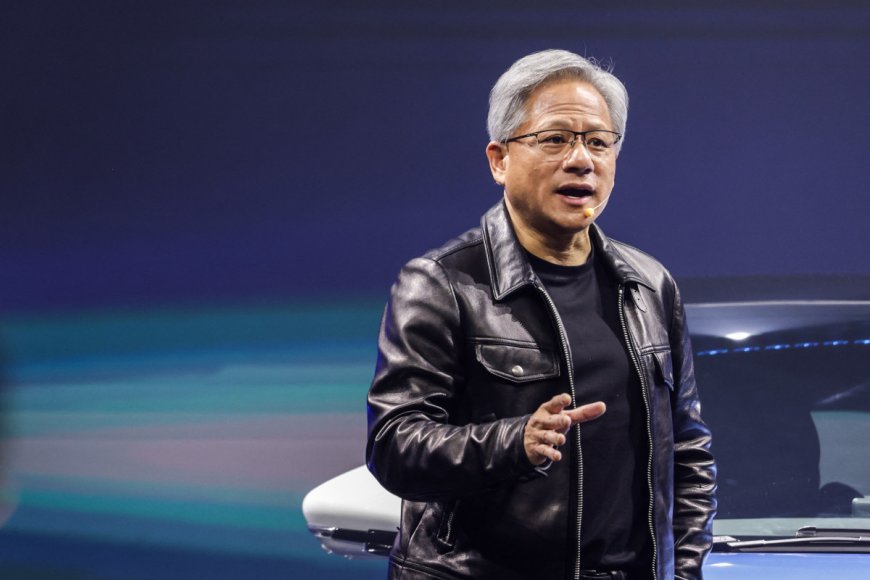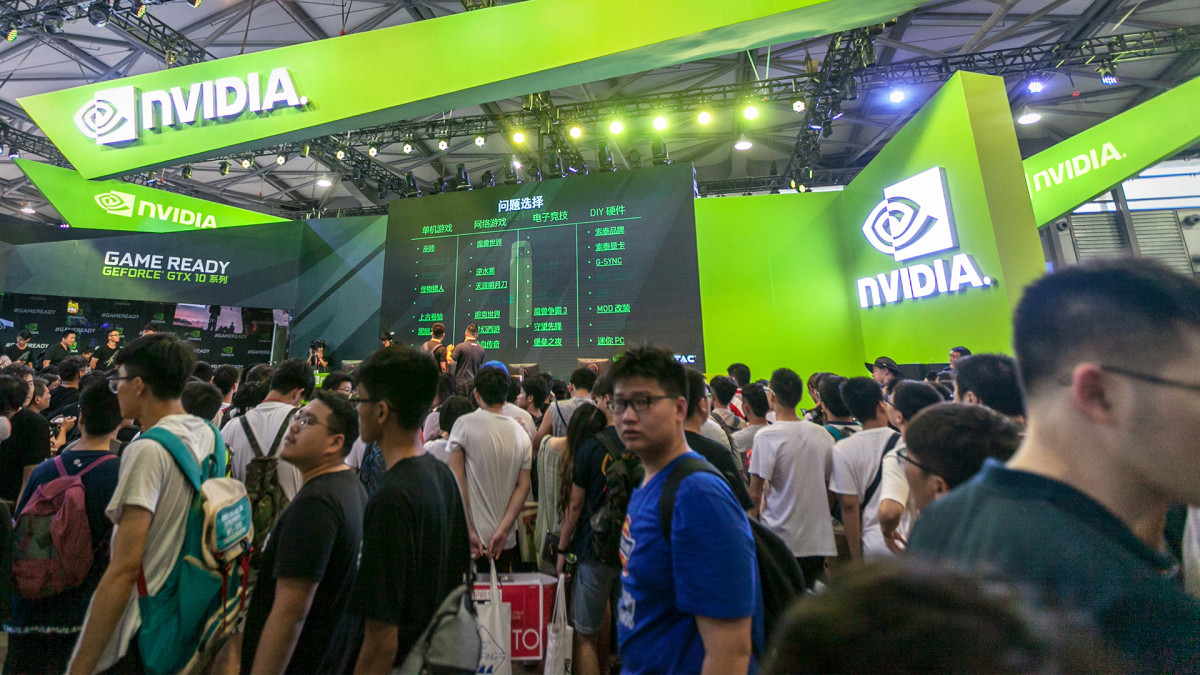Analyst who predicted Nvidia could eclipse $700 unveils new target
Here's what could happen next to Nvidia shares.

The widespread investment in artificial intelligence has been a boon to Nvidia shareholders. The company's share price has surged over the past year as optimism over increased spending on AI infrastructure has swelled, resulting in outsized gains that have left many wondering what could happen next.
While the rapid run-up in Nvidia's stock -- a meteoric 400% since 2022 -- has left jaws dropping, it hasn't caught everyone by surprise. Real Money Pro's Bruce Kamich accurately predicted last March that "investors should look for additional gains," and more recently, he outlined the possibility that shares could one day reach $726.
Nvidia hasn't quite reached Kamich's upside target, but given shares have eclipsed $700, he recently revisited his analysis, resulting in a new price target. Wu Jun/VCG via Getty Images
Nvidia skyrockets on rising AI demand
The potential for artificial intelligence has been discussed for decades. In the 1950s, mathematician and computer scientist Alan Turing researched designing AI computers, and the Rand Corporation created the first AI program in 1956. Over the years, many science fiction books and movies have entertained the possibility that machines could one day think for themselves.
Although the concept of AI isn't new, it wasn't until recently that AI truly went mainstream. ChatGPT, a large-language AI model, became the fastest application to reach one million users after its launch in December 2022.
Related: Analyst updates AMD stock price target after fourth-quarter earnings
ChatGPT's success caused a flurry of investment in similar generative AI applications designed to search, parse, and create content from large data sets. Microsoft quickly inked a deal to include ChatGPT in its Bing search engine, prompting Alphabet's Google to respond with its own AI application, Bard.
The influx of AI investment hasn't been limited to search, though. The military is researching AI's use on the battlefield, financial companies like JP Morgan Chase are using it to hedge portfolio risks, healthcare companies are examining its potential in drug development, and retailers are considering whether AI can crimp theft.
The potential application of AI across most industries and business practices has caused a surge in spending on the infrastructure necessary to train and operate AI solutions.
That's been a big boon for Nvidia (NVDA) , given its software and graphic processing units, or GPUs, are much better suited to handle AI's heavy workloads than the traditional central processing units, or CPUs, deployed in most enterprise and cloud networks.
The need to update networks to handle AI demand has caused Nvidia's sales and profit to skyrocket. Demand for Nvidia's AI chips, including the A100 and H200, led to sales surging 206% to $18.1 billion in the third quarter.
The significant increase in revenue, leveraged against fixed costs, translated into similarly substantial earnings. Nvidia's profit per share totaled $4.02 in Q3, up a whopping 593% from the same quarter in the previous year.
Nvidia faces challenges in 2024
The market for Nvidia's AI chips is global.
For example, China represents over 20% of its data center sales. Unfortunately, that's a problem because the U.S. government is increasingly concerned that China and other foreign powers may buy high-end technology to develop AI applications that could one day be used against it.
More AI Stocks:
- AI wave takes this stock to record highs as investors look beyond Mag 7
- AI stock soars on new guidance (it's not Nvidia!)
- Big tech stocks are doubling down on AI
To limit the risk, the Department of Commerce announced restrictions on sales of high-performance chips to China last year. The worry that Nvidia wouldn't be able to develop an alternative that meets the government's mandates is a major reason why Nvidia's shares fell more than 17% last fall.
That's not the only challenge Nvidia is navigating. It's also facing new competition from rival Advanced Micro Devices (AMD) .
Last year, AMD CEO Lisa Su announced plans to develop its own AI chips to challenge Nvidia's lead. Its MI300 chips started shipping this year, and demand appears robust.
During AMD's fourth-quarter conference call in January, Su predicted the AI-GPU market would grow by an average of 73% annually to $400 billion through 2027. She also said AMD expected to sell $3.5 billion worth of GPUs to data centers this year, up from a previous forecast of $2 billion.
Nvidia's CEO Jensen Huang is taking AMD's threat seriously. His team is developing its own next-gen AI chips to maintain Nvidia's leadership in the AI market. In January, they unveiled AI chips for PCs that can enhance gaming and provide AI on the device rather than requiring users to connect to the cloud. Nvidia also said it plans to ship a chip to China that meets government regulations in the second quarter.
Nvidia's charts spark a new price target
Nvidia's stock price has surged higher this year ahead of these new chips and the release of its fourth-quarter financial results on Feb. 21.
Last month, Kamich was skeptical about Nvidia's risk-to-reward despite calculating a $726 price target. Nvidia handily overcame that skepticism, and while it hasn't yet reached Kamich's target, its shares are trading above $700, leading Kamich to reevaluate his analysis, including his price targets.
Kamich, a technical analyst, has studied price and volume trends for insight into the sentiment of investors for 50 years. His latest take on Nvidia remains mixed, with concerns Nvidia shares may have run too far, too fast, despite a new higher price target that could still mean that shares rally.
"Shares are trading above the rising 50-day moving average line and are extended (overbought) above the rising 200-day moving average line," says Kamich. "NVDA is extended above the rising 40-week moving average line. Trading volume has been shrinking the past five months, and that is a negative."
Kamich notes that while the stock may be overbought, point-and-figure charts reveal yet another upside target. Specifically, using a daily P&F chart, Kamich calculated a Nvidia stock price target of $757.
That target is alluring, but investors should remember that P&F targets aren't guaranteed and don't specify timing. Given that shares are extended, it wouldn't be too surprising if they pull back at some point to digest some of their gains.
Of course, there's no telling when that may happen. Nvidia's upcoming earnings results are anticipated to reveal another solid showing, but the overhang of China restrictions last quarter remains a wildcard.
Overall, analysts expect Nvidia to deliver revenue of $18.8 billion, up a staggering 211% from one year ago, and earnings of $4.20 per share, up from just $0.88 in Q4 2022.
Related: Veteran fund manager picks favorite stocks for 2024
What's Your Reaction?


























































